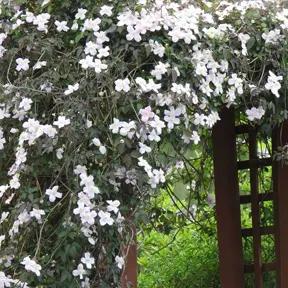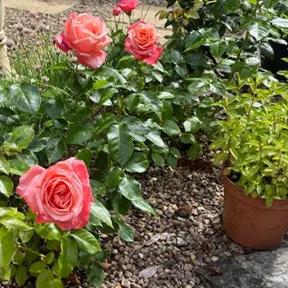Black Mulberry Trees
Morus nigra
- Final Height/Spread: 12x15m
- Foliage: Deciduous, heart-shaped, dark green
- Soil: Moist, well drained
- Technical RHS AGM
- Uses: Specimen tree
- Features: Yellow autumn colour, purple-red fruits
Recommended extras
Description
Black Mulberry, Morus nigra
An elegant, spreading, broad-crowned specimen tree, the long-lived Black Mulberry is a majestic addition and impressive focal point to any moderate to large garden. Morus nigra has large, heart-shaped green leaves that turn shades of yellow in autumn, and deep purple-red edible fruits in August and September. Highly sought after, the deliciously sweet fruit are seldom available in the shops and can be eaten raw or used in recipes as a substitute for blackberries and raspberries. They take several years after planting to produce fruit. Older specimens develop striking fissured bark that creates a beautiful feature once the leaves have fallen. Planting one is a fabulous way to invest in a garden for the future, when the crops and the mature form really get going; in the shorter term, they are still an attractive foliage tree.
Browse our range of garden trees or fruit trees.
Features
- Final Height/Spread: 12m by 15m
- Foliage: Deciduous, heart-shaped dark green
- Soil: Moist, well drained
- Uses: Specimen tree
- Features: Yellow autumn colour, purple-red fruits
- Harvest August-September.
Growing Black Mulberry
Thriving in full sun, Black Mulberry trees prefer moist, well drained soil in a sheltered position. Prune only if necessary, removing dead, diseased and damaged material during late autumn or early winter to prevent bleeding.
Mulberries take a bit longer than most trees to really settle in to a new location, so it is best to stake the tree for its first few years (a bamboo cane is fine for small trees), and the standard advice about watering a tree well in its first year mostly applies to the second year as well, when it will probably need help during dry spells.
Planting Companions for Black Mulberry
The spreading habit means it needs a substantial open, sunny space, although it will take several decades to reach its full height. Traditionally grown in short grass, it can be trained as an espalier or pruned as a bush in smaller spaces. Ideal companion plants include spring bulbs and shade-tolerant, low-growing perennials like lungwort, primroses and winter aconites.
Planting Instructions
Water well in dry weather for the first year. Black Mulberry trees do not require regular pruning. Only remove dead, diseased and damaged wood if necessary in late autumn or early winter to prevent bleeding.
Did You Know?
These trees can live to a venerable age without losing their productivity. There are mulberries in Syon Park and the gardens of Hatfield House and Charlton House that are thought to be over 400 years old.
Although this species version of the tree does not hold an RHS AGM, two of its cultivars do, and they only really differ in appearance, so this is a really reliable tree and easy to grow, provided you have a suitable site.
It's Summer Planting Season 2025

Pot Grown & Plug Plants Delivered

Direct from the Nursery Value

No more broken plants in the post!


 1.webp)
 1.webp)




